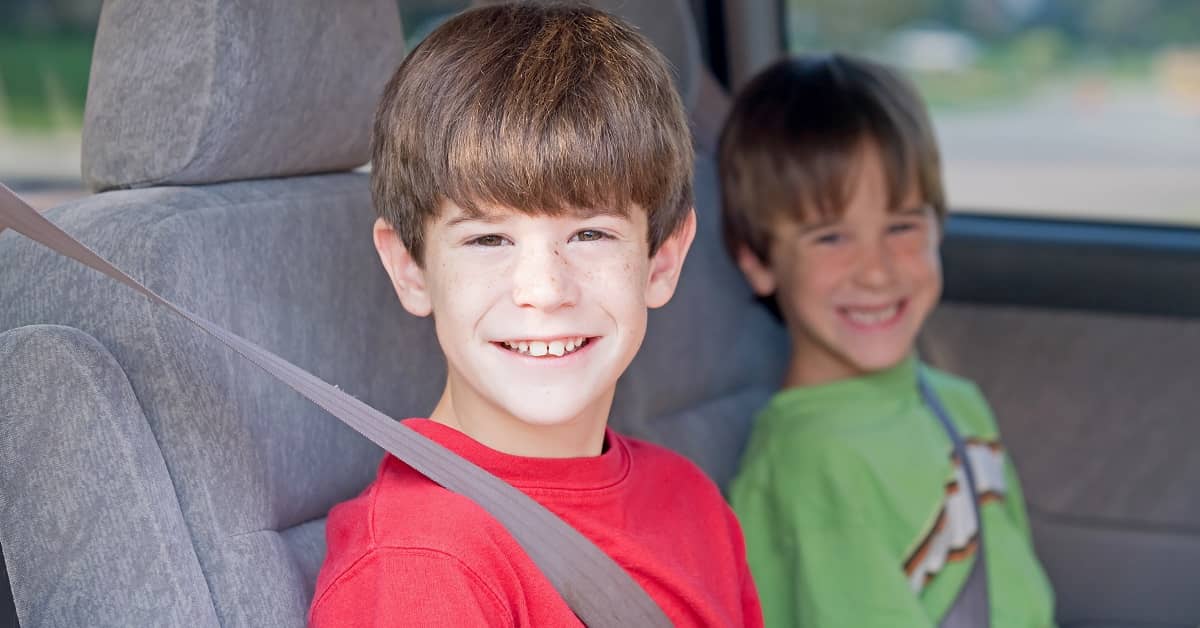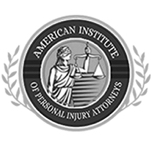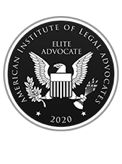
Childhood is full of milestones. From first steps and first words to the first day of school, parents will observe a wide range of changes as their children grow up.
One way to gauge your child’s development is the change in car seats as he or she gets older. Although older children may be eager to ditch the car seat and sit in the car “like a grownup,” it is crucial to follow recommendations for age, height, and weight when deciding if your child can be effectively restrained by a seat belt alone.
Keep reading for more information on how to keep your child safe in the car. If you or a loved one has been hurt in a vehicle accident, contact Patrick Daniel Law for a free case evaluation.
The booster seat is the last “stage” of equipment for child car safety. The majority of children sit in a booster seat when riding in the car from age 8 to age 12. However, this depends less on age than it does on your child’s height.
According to the American Academy of Pediatrics, children can generally graduate from using a booster seat to wearing a seat belt when they reach a height of 4 feet and 9 inches (57 inches). Most kids reach this milestone between the ages of 9 and 12 (i.e., between fourth grade and seventh grade).
More important than reaching the recommended height is how well the seat belt fits your child. It is important to check the following before taking the booster seat out of the car:
If your child cannot sit comfortably with a seat belt alone or the belt is too high anywhere on your child’s body, it is important to continue using the booster seat. Doing so will reduce the risk of injury to your child in the event of an accident.
Once your child is the right size and you confirm that the seat belt fits properly, it is still important to be conscious of vehicle safety. Parents should always make sure their kids buckle up when entering the vehicle, providing assistance to children until they can do it themselves. Set a good example for your child by buckling your seat belt first thing every time you get in the car.
No child younger than 13 should ride in the front seat of the car. The ideal place is in the middle of the back seat, provided there is a lap and shoulder belt. Children should not ride in the front seat because their bodies are not able to withstand the force of the airbag when it deploys. In the event of an accident, the impact of the airbag can cause traumatic brain injury and other serious harm. Better safe than sorry when it comes to protecting your child, so save the conversation about riding upfront until he or she goes to high school.
As always, it is important to drive safely, especially when children are in the car. A combination of proper safety restraints and careful driving significantly reduces the likelihood of a car accident in which you and other members of your family may suffer significant injuries.
No matter how hard we try to keep kids safe, accidents happen and tragedies occur. Seat belts, car seats, and other safety devices are not always enough to prevent serious injury or even death in the event of a crash.
If you and your family are facing this terrible situation, it is important to seek legal guidance as soon as possible. At Patrick Daniel Law, our team knows how devastating accidents can be for victims and their loved ones. You should be able to focus on recovery, not become mired in insurance negotiations or have to handle complex legal issues on your own.
When you work with Patrick Daniel Law, our attorneys and staff are committed to success in your case. We are Strategic, Meticulous, and Merciless, putting our experience, resources, and drive to win at your disposal.
For a free case review, please call Patrick Daniel Law at (713) 999-6666 today. Our car accident lawyers serve clients in personal injury and wrongful death claims in and around Houston, all of Texas, and nationwide.
 Top Truck Accident Lawyer in Pasadena
Top Truck Accident Lawyer in Pasadena Best of The Best Attorneys
Best of The Best Attorneys Best of the Best Houston Chronicle 2021
Best of the Best Houston Chronicle 2021 Best Motorcycle Accident Lawyers in Houston 2021
Best Motorcycle Accident Lawyers in Houston 2021 American Association for Justice Member
American Association for Justice Member The National Trial Lawyers 2016 – (Top 40 under 40)
The National Trial Lawyers 2016 – (Top 40 under 40) Multi-Million Dollar Advocates Forum 2016 (Top Trial Lawyer)
Multi-Million Dollar Advocates Forum 2016 (Top Trial Lawyer) Million Dollar Advocates Forum 2019 (Top Trial Lawyer)
Million Dollar Advocates Forum 2019 (Top Trial Lawyer) America’s Top 100 Attorneys 2020 (High Stake Litigators)
America’s Top 100 Attorneys 2020 (High Stake Litigators) Lawyers of Distinction 2019, 2020 (Recognizing Excellence in Personal Injury)
Lawyers of Distinction 2019, 2020 (Recognizing Excellence in Personal Injury) American Institute of Personal Injury Attorneys 2020 (Top 10 Best Attorneys – Client Satisfaction)
American Institute of Personal Injury Attorneys 2020 (Top 10 Best Attorneys – Client Satisfaction) American Institute of Legal Advocates 2020 (Membership)
American Institute of Legal Advocates 2020 (Membership) Association of American Trial Lawyers 2018 - Top 100 Award recognizing excellence in personal injury law
Association of American Trial Lawyers 2018 - Top 100 Award recognizing excellence in personal injury law American Institute of Legal Professionals 2020 (Lawyer of the Year)
American Institute of Legal Professionals 2020 (Lawyer of the Year) Lead Counsel Verified Personal Injury 2020
Lead Counsel Verified Personal Injury 2020 The Houston Business Journal 2021
The Houston Business Journal 2021